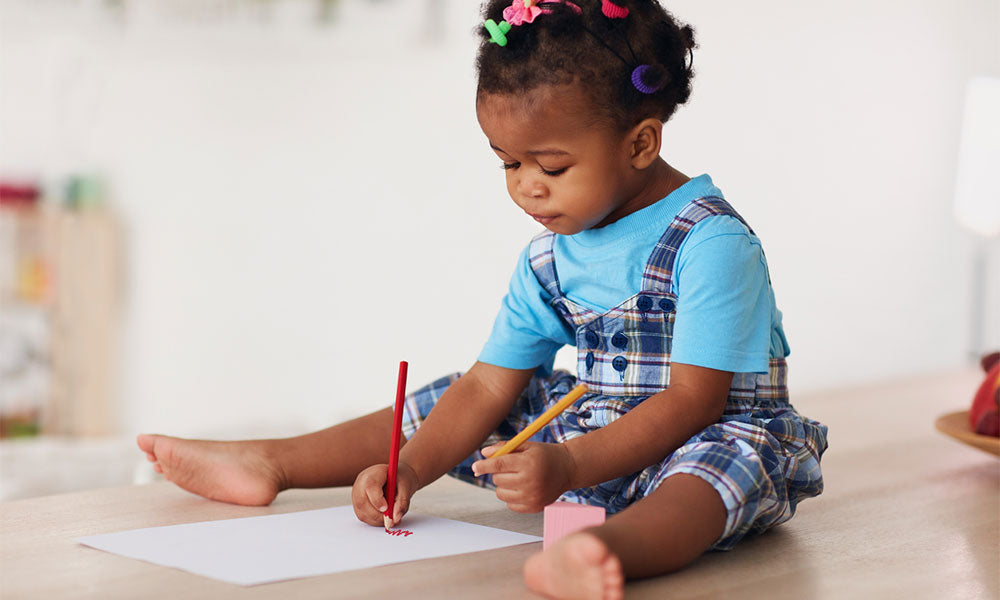Fine motor skill development is vital during toddlerhood. Abilities based on small, precise motions are a means to various ends. Independently doing tasks is critical to acquiring cognitive skills, excelling academically, participating in social activities and managing emotions - crucial milestones. Without practicing essential fine motor skills, your child may find learning advanced tasks, like playing sports and musical instruments, more challenging.
Although kids can learn fine motor activities naturally by interacting with their surroundings, it would take more time for them to develop without your intervention.
Gross vs. Fine Motor Skills — What’s the Difference?
Gross motor skills pertain to maneuvers involving large muscle groups. Conversely, fine motor skills refer to tiny, precise movements of wrists, hands, fingers, ankles, feet and toes.
Both motor skills require proper function and complex coordination of bones, skeletal muscles and the nervous system. Children learn gross motions first during infancy.
Strong gross motor skills underpin body awareness, balance and reaction speed, laying the foundation for fine motor skill building. Practicing gross movements helps your little one stabilize their bodies, control their posture, strengthen their hands, build endurance, and plan and execute their maneuvers. They also sharpen their hand-eye coordination — a cognitive ability unifying hand and eye movements.
Figuring out how to sit upright unsupported, stand, walk, run and other essential abilities when they’re muscularly strong and coordinated enough unlocks a world of possibilities for your toddler. Suddenly, they can perform more activities optimized for refining their fine motor skills.
Examples of Fine Motor Skills for Toddlers
Children develop at their own pace. During toddler years, kids typically reach these fine motor skill milestones.
At 13-24 months, they can:
- Clap hands together
- Play with both hands
- Put things into containers
- Wave goodbye
- Isolate the index finger while the others are closed
- Flip multiple book pages at a time
- Scribble with crayons
- Turn knobs
- Stack three to four small blocks
- Start to feed themselves with utensils
At 25-36 months, they can:
- Turn single book pages
- Hold crayons with fingertips
- Use scissors to make small cuts
Some kids learn fine motor skills for infants, toddlers and preschoolers faster than others. Not knowing these motions doesn’t necessarily mean there’s something wrong with your kid.
However, you may witness fine motor delays if your child is on the spectrum. Neurodiverse kids often experience coordination, posture and motor planning difficulties. Autism in boys manifests differently compared to girls, which is why neurodivergent male children tend to have lower motor skills than their female counterparts.
Consult a health care provider if you notice odd behaviors or lengthy delays in fine motor skill development in your young one. Their pediatrician may perform tests to dig deeper and recommend activities to improve your child’s situation.
Best Toddler Activities for Developing Fine Motor Skills
Providing appropriate activities for your child can help them acquire and refine their fine motor abilities more quickly. These are best for toddlers.
Playdough
Playdough is the perfect toy for helping children exercise their hand muscles. Its clay-like texture encourages your little one to pinch, stretch, pull, roll and create anything they can imagine. Your kid has to exert effort to make shapes with the dough because it resists external force, honing their fine motor skill set in the process.
Think twice before making playdough from scratch. Raw flour is toxic because it may contain E. coli and salmonella — heat-treating this ingredient at home may not do the trick.
Puzzles
Doing jigsaws enhances toddlers’ dexterity and hand-eye coordination. Grasping, fiddling and fitting pieces together require intricate, delicate movements that engage fingers and hands.
Assembling challenging puzzles can be frustrating. Help your kid build confidence by starting with larger pieces before going smaller. This progression provides them with solvable problems, cultivates a sense of accomplishment and motivates them to do more jigsaws.
Blocks
Playing with blocks sharpens fine motor control. Picking up, lifting, moving and building towers of blocks of various sizes demands unique wrist, hand and finger movements. This activity also improves hand-eye coordination.
Board Games
Board games with dice, spinner wheels, tokens and other manipulable pieces provide a good excuse for kids to work with their hands and fingers. Doing repetitive movements for hours gives your toddler a ton of practice and helps them develop skills necessary for performing daily tasks as they grow older.
Coin Sorting
Coin activities can be additive to toddlers because of their tactile nature, making them an engaging distraction when developing fine motor abilities. Arranging pennies, nickels, dimes and quarters by size, color or design enables your young one to experiment with palmar grasp, raking motion and pincer grasp. Aside from sorting and stacking coins, you can level up your child’s fine motor skills by instructing them to place them in a piggy bank.
A word of caution — cash harbors disease-causing bacteria, viruses and fungi. Clean and sterilize the coins to safeguard your child from pathogens and use them only for this activity to avoid contamination.
Threading
Putting smaller objects onto longer ones is more than a pediatric grasping exercise — it’s mental gymnastics. Clasping beads or small chunks of food, such as rigatoni, penne and tortiglioni, and guiding their hand as they put pieces on a thread one at a time hones pincer grasp and builds hand strength.
Lacing strings through a hole, inserting straws through punctures in cardboard and other similar fine motor activities also work for toddlers.
Finger Painting
This activity involves small-muscle movements and spurs nerve maturity in children’s fingers. Letting your toddler unleash their inner painter using applesauce allows them to build foundational skills necessary to learn and master writing later in life.



